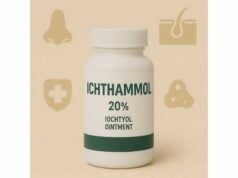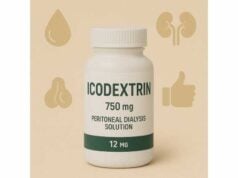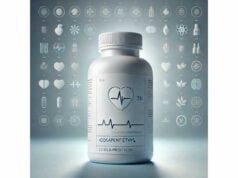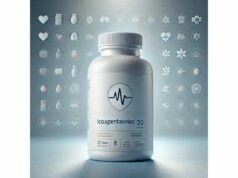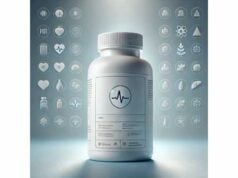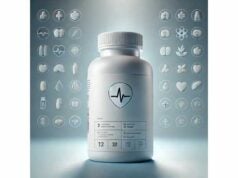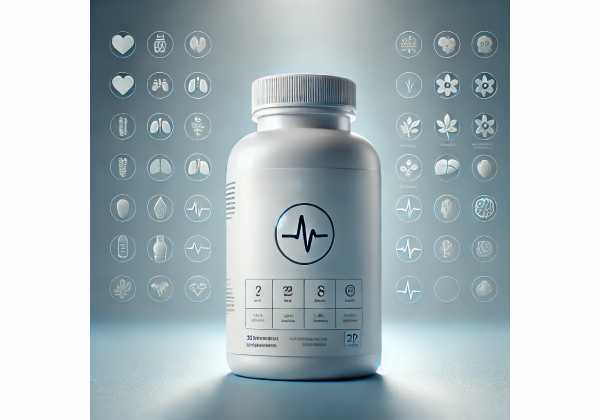
Idebenone is a synthetic analog of coenzyme Q10 designed to support mitochondria—the tiny “power plants” inside cells. Unlike coenzyme Q10, idebenone has a shorter side chain and different redox behavior, allowing it to work even when complex I of the respiratory chain is impaired. That makes it particularly relevant in conditions where retinal ganglion cells or neurons struggle to make energy and fend off oxidative stress. In clinical practice, idebenone is authorized in several countries for Leber hereditary optic neuropathy (LHON), and it has been studied in other disorders with mixed results. As a supplement, it appears in formulations aimed at eye, brain, and cellular energy support. This guide explains how idebenone works, what benefits are realistic, how to dose and time it, how to combine it thoughtfully with diet and lifestyle, and what risks to watch for so you can have an informed discussion with your clinician.
Quick Overview
- Supports mitochondrial electron transfer and reduces oxidative stress, with clinical use in LHON.
- Typical therapeutic dose: 300 mg three times daily (total 900 mg/day) with food; lower doses are common in over-the-counter products.
- Key risks: gastrointestinal upset, liver enzyme elevations, and rare hypersensitivity; monitor if used long term.
- Avoid during pregnancy and breastfeeding, and in people with active liver disease unless supervised by a clinician.
Table of Contents
- What is idebenone and how it works
- Proven benefits and limitations
- How to use it: dosing and timing
- Choosing forms and stacking smartly
- Safety risks and who should avoid
- Evidence summary: what studies show
What is idebenone and how it works
Idebenone (hydroxydecyl ubiquinone) is a benzoquinone compound developed to mimic the electron-carrying function of coenzyme Q10 while offering distinct pharmacologic advantages. In the mitochondrial inner membrane, energy is produced through a chain of protein complexes (I–IV) that move electrons and pump protons to generate ATP, the cell’s energy currency. When complex I is faulty—as in many mitochondrial diseases and in LHON—electrons “back up,” reactive oxygen species (ROS) increase, and energy output falls. Retinal ganglion cells are especially vulnerable because they have high energy demands and relatively limited antioxidant capacity.
Here’s how idebenone is thought to help:
- Alternative electron shuttle: Idebenone can accept electrons from cytosolic and mitochondrial reductases and donate them directly to complex III, bypassing complex I. That keeps the chain moving and helps maintain the proton gradient that powers ATP synthesis.
- Antioxidant action: In its reduced form, idebenone can neutralize ROS and protect lipids and proteins in membranes. It also helps maintain the redox balance of glutathione and other cellular antioxidants.
- Membrane permeability and distribution: Its shorter, more polar tail (compared with coenzyme Q10) improves solubility and tissue penetration, allowing it to reach neuronal tissues where redox stress is high.
- Cytoprotective signaling: By stabilizing mitochondrial function, idebenone may reduce downstream inflammatory signaling and limit apoptosis in stressed cells.
Pharmacokinetically, idebenone is rapidly absorbed when taken with food and extensively metabolized to inactive forms that are excreted primarily via urine. The parent compound has a relatively short plasma half-life, which is why divided dosing is standard in therapeutic use. Because mitochondrial disorders and optic neuropathies involve chronic bioenergetic stress, benefits—if they occur—often emerge over weeks to months of consistent intake rather than days.
Finally, it’s important to separate biologic plausibility from clinical efficacy. Many compounds can improve markers of oxidative stress in cells; far fewer demonstrate meaningful, patient-centered outcomes like vision stabilization, improved function, or slowed disease progression. Idebenone has shown such outcomes in specific scenarios (most notably LHON) but not universally across conditions. Understanding where it helps—and where it likely does not—will save time, money, and disappointment.
Proven benefits and limitations
1) Leber hereditary optic neuropathy (LHON)
LHON is a mitochondrial disorder—most commonly due to mutations m.11778G>A, m.3460G>A, or m.14484T>C—characterized by acute or subacute, painless, central vision loss. Retinal ganglion cells degenerate quickly, and without intervention, many patients progress to profound visual impairment. Idebenone is authorized in several regions for treating visual impairment in adolescent and adult LHON patients. Clinical programs have shown that, when started within the therapeutic window (often within a year of onset), idebenone can increase the chance of visual stabilization or clinically relevant improvement in at least one eye. Benefit appears more likely when treatment begins earlier, and some genotypes (such as m.14484T>C) have historically shown more spontaneous recovery, which complicates interpretation. Even so, the totality of controlled trials and long-term follow-up suggests idebenone can tilt outcomes in favor of recovery or partial restoration for a subset of patients.
2) Other optic neuropathies and mitochondrial disorders
Outside LHON, evidence is mixed. Small studies and case series have explored idebenone in toxic or inflammatory optic neuropathies and in broader mitochondrial cytopathies. Improvements in surrogate endpoints (contrast sensitivity, electrophysiology, or patient-reported function) have been described, but robust, confirmatory trials are limited. In everyday practice, clinicians might consider idebenone off label when pathophysiology points to complex I dysfunction and when standard care leaves an unmet need, but expectations should be tempered and discussed openly.
3) Neurologic and cardiomyopathic conditions
Because mitochondria influence neurodegeneration and cardiac energetics, idebenone has been investigated in disorders such as Friedreich ataxia and certain cardiomyopathies. While early, small studies hinted at functional gains (e.g., left ventricular hypertrophy metrics or ataxia scales), larger trials have not consistently met primary endpoints. This does not negate potential individual benefit; rather, it highlights variability in disease biology, dosing, and study design. At present, idebenone should not be viewed as a broadly effective neuroprotective therapy outside defined indications.
4) Skin, aging, and wellness claims
Topical idebenone appears in cosmetics positioned for antioxidant defense and photoaging. Laboratory studies support ROS scavenging in skin models, but durable, clinical anti-aging outcomes in humans remain modest and formulation-dependent. As an oral “anti-aging” supplement, idebenone is intriguing mechanistically yet unproven in hard outcomes such as physical function or cognitive trajectories.
Take-home on benefits: The strongest clinical signal is in LHON, particularly when started soon after vision loss. Elsewhere, evidence ranges from promising to inconclusive. If you’re considering idebenone beyond LHON, anchor decisions to a clear rationale (e.g., suspected complex I impairment), realistic goals, and a defined trial period with objective measures.
How to use it: dosing and timing
Therapeutic dosing (medical use)
- Standard regimen: 300 mg three times daily with food (total 900 mg/day). Dividing the dose helps maintain steady exposure and may reduce stomach upset.
- Duration: In LHON, treatment is typically continued for at least 6–12 months before judging futility, with longer courses when vision stabilizes or improves. Some clinicians extend therapy beyond a year in responders.
- Onset and expectations: Subtle changes (contrast sensitivity, color vision) may precede snellen acuity gains. Document baselines and reassess at regular intervals (e.g., every 6–8 weeks initially, then quarterly).
Supplement dosing (wellness or off-label contexts)
- Over-the-counter products often provide 45–150 mg per capsule. Common self-care ranges are 90–300 mg/day, taken with food. These amounts are below therapeutic regimens; whether they confer noticeable benefits depends on the goal (general antioxidant support vs a disease endpoint).
- If a clinician supports a structured trial outside LHON, a step-up approach (e.g., 150 mg/day for 2 weeks, then 300 mg/day if tolerated) can gauge GI tolerability before considering higher targets.
Administration tips
- Always with food: Fat enhances absorption and may reduce GI side effects.
- Split dosing: For totals above 200–300 mg/day, dividing into 2–3 doses is preferred.
- Consistency: Mitochondrial support is not a “take it once and feel it” category; daily adherence over weeks is essential to test effect.
Adjustments and special populations
- Hepatic impairment: Use caution. Consider lower starting doses, longer intervals before up-titration, and more frequent liver function tests.
- Renal impairment: No specific adjustment is typically required, but monitoring is prudent given urinary excretion of metabolites.
- Adolescents: Therapeutic regimens in LHON begin around 12 years of age in many regions; pediatric use outside that context should be specialist-led.
- Older adults: Start low and monitor for drug–drug interactions and liver enzyme changes.
When to stop
- No objective benefit after a defined trial period (often 4–6 months in off-label contexts, 6–12 months in LHON) despite good adherence.
- Persistent or severe side effects despite dose adjustments.
- Pregnancy planning or confirmed pregnancy, unless a specialist justifies continuation.
What to pair with it
- A nutrient-sufficient, Mediterranean-style diet supports mitochondrial enzymes and antioxidant systems.
- Address treatable contributors to mitochondrial stress—sleep apnea, iron or B12 deficiency, uncontrolled diabetes, and tobacco exposure—so any supplement has a fair chance to help.
Choosing forms and stacking smartly
Forms and quality considerations
- Prescription-grade tablets (where available) provide standardized 150–300 mg strengths with validated dissolution and stability, intended for LHON.
- Dietary supplements vary widely in dose, excipients, and testing. Look for third-party certifications (e.g., identity/purity testing) and transparent labeling of idebenone amount per capsule—not just “proprietary blend” claims.
- Liposomal or oil-based capsules may improve absorption, though rigorous head-to-head data are limited. In any case, taking idebenone with a meal containing fat is a practical, reliable absorption enhancer.
Stacking strategies
- With coenzyme Q10 (ubiquinone/ubiquinol): This pairing is popular. CoQ10 supports general electron transport where complex I is intact, while idebenone may bypass complex I when it is not. If stacking, ensure each is dosed reasonably (e.g., CoQ10 100–300 mg/day plus idebenone per the goals above).
- With riboflavin (vitamin B2) and niacin (B3) in physiological doses: These vitamins serve as cofactors for dehydrogenases that supply electrons to the chain. Use standard RDA-level amounts unless deficiency is proven; megadoses are seldom necessary.
- With alpha-lipoic acid or acetyl-L-carnitine: These compounds support mitochondrial redox cycling and fatty-acid transport, respectively. Introduce one at a time so you can attribute effects and tolerability.
- Avoid redundancy: Stacking multiple “antioxidants” in high doses can be counterproductive, blunting adaptive stress signals needed for mitochondrial biogenesis. Focus on a compact, tested regimen rather than a kitchen sink approach.
Timing with medications
- Separate from bile acid sequestrants and other agents that reduce fat absorption by at least 2–4 hours.
- If you take CYP3A-modulating drugs (azole antifungals, some macrolides, certain anti-seizure medicines, or herbal St. John’s wort), discuss with your clinician; these agents can alter exposure to many lipophilic compounds and may influence idebenone handling.
Pragmatic “build-test-refine” plan
- Define the goal (e.g., visual function stabilization, fatigue reduction, exercise tolerance).
- Pick a measurable marker (visual acuity/contrast, 6-minute walk distance, symptom scales).
- Introduce idebenone at a tolerable starting dose with food; maintain for 8–12 weeks.
- Reassess objectively. If no change, evaluate adherence, interactions, and lifestyle factors before adjusting dose or discontinuing.
- Layer additional supports only after completing a clean idebenone trial; change one variable at a time.
Safety risks and who should avoid
Common side effects
- Gastrointestinal: Nausea, abdominal discomfort, diarrhea, or dyspepsia—often mild and reduced by taking with meals and splitting doses.
- Neurologic: Headache, dizziness, or insomnia in sensitive individuals, usually transient.
- Respiratory and ENT: Cough or nasopharyngitis have been reported in therapeutic programs, typically self-limited.
- Laboratory changes: ALT/AST elevations can occur; most are asymptomatic and reversible with dose adjustment or discontinuation.
Less common but important
- Hypersensitivity reactions: Rash, pruritus, or rare anaphylactoid presentations. Discontinue and seek care if symptoms are severe.
- Hepatotoxicity: Persistent, marked liver enzyme rises or jaundice warrant immediate evaluation and cessation.
- Blood pressure and heart rate: Not a typical issue, but anyone with autonomic instability should monitor when changing mitochondrial-targeted regimens.
Drug–drug interaction themes
- CYP3A modulators: Strong inducers may reduce exposure; strong inhibitors may increase it. Review all prescriptions (including antifungals, antiepileptics, macrolides) and botanicals (e.g., St. John’s wort).
- Anticoagulants and antiplatelets: No consistent signal of elevated bleeding risk, but monitor clinically, especially if GI irritation occurs.
- Chemotherapeutics and immunosuppressants: Always coordinate with the supervising specialist; antioxidant therapies can, in theory, interact with redox-sensitive mechanisms.
Who should avoid or use only under specialist care
- Pregnant or breastfeeding individuals: Safety data are insufficient; avoid unless a clear, specialist-supported indication exists.
- Active liver disease: Use cautiously—with baseline and periodic labs—or choose alternatives.
- Known allergy to idebenone or excipients.
- Children under 12 years outside a specialist-led program.
Monitoring plan
- Before starting: Review medications, medical history, and baseline labs (ALT, AST, bilirubin). Establish objective metrics aligned with the goal (vision testing, walking tests, fatigue scales).
- During use: Recheck liver enzymes 4–8 weeks after initiation and periodically thereafter, or sooner if symptoms arise. Track your predefined outcome metrics at the same cadence.
- When to call the clinic: Yellowing of skin/eyes, dark urine, severe abdominal pain, persistent vomiting/diarrhea, widespread rash, shortness of breath, or sudden visual changes.
Harm reduction in real life
- Take with meals, stay hydrated, and limit additional unproven antioxidants while testing idebenone so you can clearly interpret effects.
- Keep all supplements in a single, updated list you share with every clinician you see.
- If you smoke or vape, seek cessation support—tobacco toxins overwhelm mitochondrial defenses and counteract redox-based strategies.
Evidence summary: what studies show
Leber hereditary optic neuropathy (LHON)
Randomized and prospective studies in LHON formed the basis for idebenone’s therapeutic use. Across trials, patients were treated with 900 mg/day (300 mg three times daily) and followed for visual outcomes (best corrected visual acuity, contrast sensitivity) and safety. Signals observed:
- Higher rates of clinically meaningful visual recovery in at least one eye compared with control, especially when treatment began within the early phase of disease.
- Stabilization of vision in some patients who otherwise might have continued to decline.
- Genotype and timing matter: Earlier initiation is consistently associated with better odds of improvement, and natural history differs across mtDNA variants, which investigators accounted for in analyses.
- Safety: The most frequent adverse events were mild to moderate GI complaints and nasopharyngitis; serious liver or hypersensitivity events were uncommon but recognized, underscoring the need for monitoring.
Friedreich ataxia and other neurologic conditions
Clinical trials in Friedreich ataxia have reported mixed outcomes. Some early studies noted improvements in surrogate markers (e.g., cardiac hypertrophy indices) or exploratory functional scales, but larger, later trials often did not meet primary efficacy endpoints. This pattern suggests that while idebenone can modulate mitochondrial redox biology, translating that into consistent, clinically meaningful gains across heterogeneous neurodegenerative diseases is challenging. Research continues to explore dosing, patient selection, and composite outcomes that better reflect mitochondrial pathophysiology.
General mitochondrial disease
Open-label and small controlled studies in broader mitochondrial cytopathies indicate variable responses. People with predominant complex I dysfunction seem the most biologically plausible responders, but heterogeneity, small sample sizes, and flexible endpoints limit firm conclusions. In practice, clinicians may consider idebenone as part of a broader mitochondrial support plan with clear trial periods and stop rules.
What all of this means for you
- Strongest case: LHON, initiated promptly after onset, with realistic expectations and specialist follow-up.
- Promising but unproven: Select optic neuropathies and mitochondrial phenotypes with suspected complex I deficits.
- Not broadly effective: As a general neuroprotective or anti-aging pill, current evidence does not support routine use for hard outcomes.
- Safety first: Even a well-tolerated mitochondrial agent needs liver monitoring and interaction checks over months of use.
Practical evidence-based checklist
- Confirm the indication and timing window.
- Use 900 mg/day in three divided doses for therapeutic indications under medical supervision.
- Measure what matters (e.g., standardized vision metrics).
- Reassess at 6–12 months; continue only if the risk–benefit balance remains favorable.
- If using outside LHON, predefine a shorter, rigorous trial with objective endpoints to avoid open-ended, low-yield supplementation.
References
- Raxone: EPAR – Product Information 2023.
- Safety and efficacy of idebenone for Leber’s hereditary optic neuropathy (RHODOS): a randomized, double-blind, placebo-controlled trial 2011 (RCT).
- Efficacy and safety of idebenone in Leber hereditary optic neuropathy: a systematic review and meta-analysis 2021 (Systematic Review).
- Idebenone treatment in Friedreich ataxia: neurological and cardiological aspects 2009 (Clinical Study).
- Mitochondrial disease and the role of oxidative stress: therapeutic implications of idebenone 2017 (Review).
Disclaimer
This article provides general information and is not a substitute for professional medical advice, diagnosis, or treatment. Do not start, stop, or change any medication or supplement without guidance from a qualified clinician who knows your medical history. If you experience jaundice, severe abdominal pain, persistent vomiting or diarrhea, rash, shortness of breath, or sudden changes in vision while taking idebenone, seek medical care promptly. If you found this guide helpful, please consider sharing it on Facebook, X (formerly Twitter), or another platform you use, and follow us for more evidence-based health articles. Your support helps us continue creating high-quality content.

